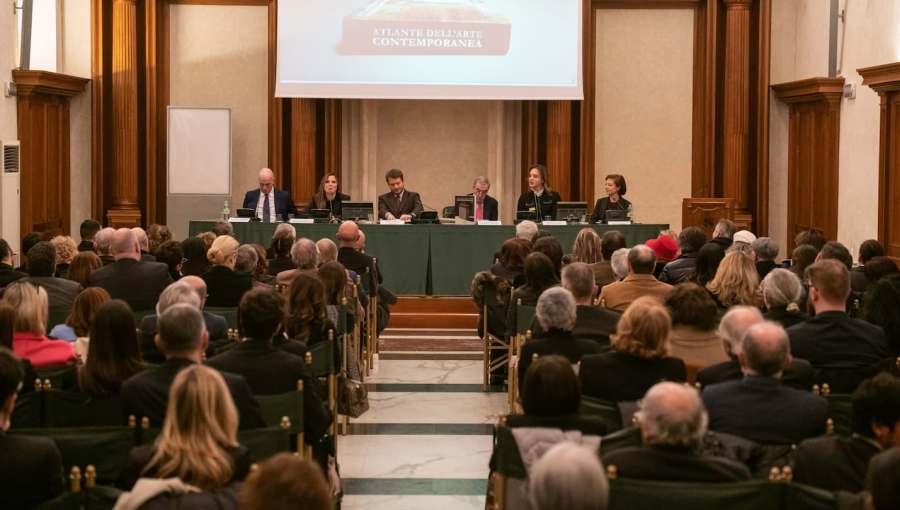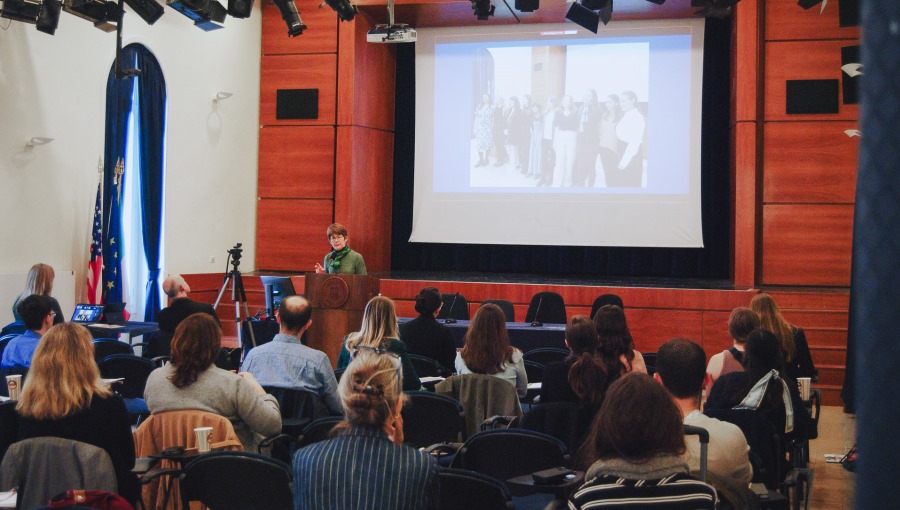Communications Meets Art: Student Natalia Stanusch
Hailing from Poland, student Natalia Stanusch is a double major in Communications and Art History. Natalia recently published an article called “The HaHa of Digital Deterritorialization: Looking at Memes through the lens of Dada Laughter” in the Meme Studies Research Network.
What brought you to JCU?
After graduating from high school in Poland, I wanted to challenge myself and pursue my B.A. abroad. I found the idea of an American liberal arts college very alluring because I welcomed the opportunity to build my own curriculum. I considered several options, but when I came to visit JCU, I could feel in my heart that it was the right place. After almost four years of studying and living in Rome, I can say that I have not regretted this decision.

Natalia Stanusch
Congratulations on the publication of your article “The HaHa of Digital Deterritorialization: Looking at Memes through the lens of Dada Laughter” in the Meme Studies Research Network. Tell us more about it.
I used Dada, the avant-garde art movement, as a framework to conceptualize how ‘meme laughter’ can be understood and classified. I noticed that there is a similarity in why we laugh in both Dada and memes. On the formal level, both memes and Dada take cultural texts (any product of culture, be it a photograph, a political message, an advertisement) and create new meanings by putting new elements together. I use the term ‘deterritorialization’ because it implies this act of taking something away from its ‘space’ and forcing it into new relations in a new space. In looking at many examples of Dada works, such as collage and memes, we laugh because the image mocks someone and we are invited to laugh along. Often, ironically, the mocking targets us, the viewer. We laugh because the situation we are facing is too overwhelming and scary to comprehend, e.g. the Covid-19 pandemic or the First World War in the Dada context. We are acting out laughter with others, by changing, shifting, and playing with meaning, which the internet memes now, and Dada back then, allow for.
Writing the article was exhilarating, particularly when I worked with the editors from the University of Edinburgh and the University of Cambridge during the editing process. It was lovely to build on my experience from both Communications and Art History and it feels rewarding to add my little contribution to the structure of an international academic discussion. Hopefully it will resonate and inspire others.
You’re a double major in Communications and Art History. What prompted you to combine these two fields?
I started out as a Communications major, but I was always interested in the arts. I don’t think I would have taken the step to do a double major without the support of Professor Inge Lyse Hansen, whose guidance was beyond precious, and whose spirit and knowledge strengthened my passion for Art History. While I was exploring Art History as my second major, I took courses that were also very applicable for Communications. For example, ‘Introduction to the History of Photography’ with Professor Sarah Linford.
The double major allows me to have a broader repertoire of tools for analyzing, criticizing or attempting to understand a given phenomenon today, from social media to contemporary art. My recent article on memes and Dada is a useful example of this attempt to wear two hats, that of an art historian and of a media studies scholar!
You were one of the speakers in the 5th JCU Posthuman Studies Workshop, where you talked about virtual influencers and the juxtaposition of digitally-constructed avatars and a photographic representation of the physical “reality.” Tell us about your contribution.
I was honored to be asked by Professor Stefan Lorenz Sorgner to be one of the speakers during the Workshop, alongside international scholars such as Natasha Vita-More and Giacomo Marramao. I presented on how the Digital is embedded in our visual perception. There’s no longer a binary between ‘offline’ and ‘online.’ We have to learn to live, work, and create in this new hybrid environment. During the Posthuman Studies course I took with Professor Sorgner I had already discussed the issues of artificial intelligence art and new media art, so when I had a chance to present at the Workshop I focused on a more ‘media studies’ topic.
A research paper on the evolution of emojis that you wrote for the ‘Selfies and Beyond: Exploring Networked Identities’ course inspired an article that got published on the Institute of Network Cultures’ website. What conclusions did you draw from this research?
I had been thinking about an idea for emoji research for a long time, and having taken courses with Professor Donatella Della Ratta in the past, I knew that the ‘Selfies and Beyond’ course would give me the resources and freedom to fully explore it. Professor Della Ratta has had a great impact on shaping my academic path. She introduced me to a variety of issues in media studies, but she also allowed me to focus on areas of my own interest, namely the intersection of the visual and physical in social media platforms. I am interested in the ‘environment’ that we enter once we open social media platforms. Each design element on social media is a choice, either made by a human designer or an algorithm written by a human. Why do I see what I see when I open a given social media platform? How does it influence me, my visual perception, my emotions, my idea of ‘sociality’ that platforms mediate? I’m seeking answers to these questions.
Writing for the Institute of Network Cultures in Amsterdam allowed me take on a more conversational tone in my writing. The feedback I got from Geert Lovink, the founder of the Institute, was very stimulating and helped me sharpen my ideas and push the topic further. This experience also surely increased my desire to write and publish!
What tips and/or advice would you give to students who are considering applying to JCU?
Explore. The environment of JCU allows you to explore both familiar and unfamiliar fields. It challenges you and makes you grow. For example, academically speaking, I was very unsure about videomaking, and I postponed taking any course related to it for semesters. But once I finally took the Introduction to Videomaking class with Professor Marco Ferrari, I discovered a whole new universe of expression, speaking, looking. A short film I made was even presented at the University of East London’s conference “Affect & Social Media#4.5.” I was inspired to explore these new tools and fields thanks to the wonderful people I met here at JCU, my professors, my friends, and the always-inspiring city of Rome.





